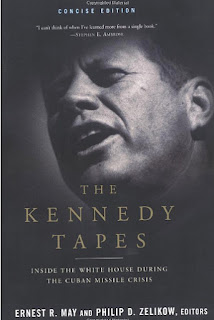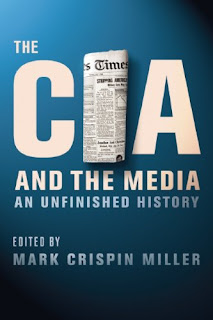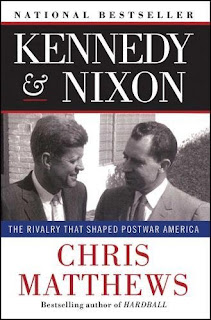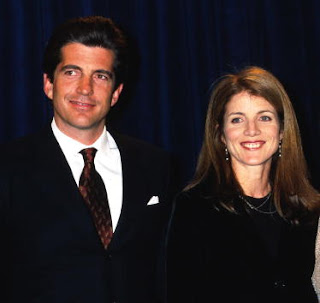
In an address to the California State Democratic Convention on February 3, 1987, Mr. Joe Biden said that "every generation of Americans has been called" to a test of devotion to democracy; John F. Kennedy used the same phrase about national loyalty in his presidential inaugural address in 1961. Other times, Biden uses longer passages almost verbatim. Senator Biden has credited Robert F. Kennedy as "the man I think I admire more than anyone in American politics." But Biden hasn't always given him credit for the words he used first. When Senator Kennedy ran for president in 1968, he spoke in Des Moines and again at the University of Kansas about the measure of a nation."The gross national product does not allow for the health of our children, the quality of their education or the joy of their play," Senator Kennedy said. '' It does not include the beauty of our poetry, or the strength of our marriages, the intelligence of our public debate, or the integrity of our public officials. It measures neither our wit nor our courage, nor our wisdom nor our devotion to our country.It measures everything, in short, except what makes life worth living, and it can tell us everything about America except why we are proud to be Americans. '' In the California convention speech, Senator Biden spoke about "the ultimate moral test of what this country is," and denounced what he saw as the new materialism of society. "We cannot measure the health of our children, the quality of their education, the joy of their play," he said. after opening his speech stating that he wanted to tell the audience "what I have in mind". It does not measure the beauty of our poetry, the strength of our marriages, the intelligence of our public debate, the integrity of our public officials. Neither our wit nor our wisdom, neither our compassion nor our devotion to our country count,'' Biden continued to applause. "That end result can tell us everything about our lives except what makes life worth living, and it can tell us everything about America except what makes us proud to be Americans." Fordham's speech recalled that in the same speech, Senator Biden warned against the danger of hopelessness, against the idea that there is little one person can do to affect events. ' Well, few of us have the greatness to modify history itself, '' Biden said. "But each of us can act to affect a small part of the events, and in the totality of these acts the history of this generation will be written." The Biden campaign, in a direct mail fundraising effort, recently aired a partial tape of the California speech that included the quote from "greatness to bend history."

This memorable subject had been offered by Robert Kennedy in a speech at Fordham University in June 1967. "Few will have the greatness to bend history," Kennedy said at the time. "But each of us can work to change a small part of the events, and in the total of all those acts the history of this generation will be written." The Biden echo of Kennedy was noticed, with surprise, by many regular Democrats in the California convention audience. It was also noticed in other parts of the country by some who watched Biden's performance live on the cable television network C-SPAN. At the White House, N. Jeffrey Lord, associate director of the political affairs office, watched as Senator Biden spoke.A devoted admirer of Robert Kennedy in his youth who keeps a copy of Jamie Wyeth's portrait of John Kennedy in his Reagan White House office, Lord had recently heard a commemorative record of Robert Kennedy's speeches. As Senator Biden spoke, Lord suddenly found himself reciting the words along with him. "I was finishing sentences before him," said Lord, who called The New York Times to point out the similarities. I wanted to hear because Biden had such a reputation as a great speaker that I wanted to hear him. But suddenly I realized that the speech was not Joe Biden, it was Robert Kennedy. He was repeating the exact language, without attributing it. I was really mad. I wanted to hear because Biden had such a reputation as a great speaker that I wanted to hear him. But suddenly I realized that the speech was not Joe Biden, it was Robert Kennedy. He was repeating the exact language, without attributing it. I was really mad.''

JFK was terribly sensitive to the criticism Ms. Kennedy received after her White House tour. He was terribly upset about it because she tried so hard and thought she had done a good job. He thought the criticism (I think it was David Wise of the Herald Tribune) he gave him was very unfair. JFK once gave his definition of happiness which, he said, was ancient Greek philosophy "the full use of all its powers in the line of excellence." I think he always tried to keep his definition up.

Deep Politics and the Death of JFK by Peter Dale Scott was published in 1993 by the University of California Press. Bruce Cumings, Gaeton Fonzi, and Oliver Stone provided promotional reviews of the book. Kirkus Reviews called the book an "astonishingly well-researched and intelligent insight not only into the assassination of JFK but also into the rising forces that undermine American democracy." Kirkus' review also described the book as a "sort of Rosetta stone to unlock the deepest darkness of American politics." According to Publisher Weekly, "the book's most useful feature is a careful discussion of how US policy in Vietnam abruptly changed after Kennedy's death."In 2013, former Salon editor-in-chief David Talbot included Deep Politics in his list of the seven "best books on the subject", describing the work as a "masterpiece of how operate the high rankings of power."

JFK's adviser Kenneth P. O'Donnell could somehow go into the official record after the 1976 National Enquirer exposition of the Meyer-Kennedy affair and defend the brilliant Camelot myth in his attempt to deny that there had been any a romance between Mary Pinchot Meyer and President Kennedy; However, just a year later, shortly before her death, she confides to author Leo Damore some of the intimate details of their relationship. In the same way that O'Donnell never spoke publicly about how the FBI had discounted his testimony that the presidential motorcade in Dallas was leading into an ambush where at least two shots had come "from behind the fence on the grassy knoll", O'Donnell confirmed twenty-five years later to the Speaker of the House, Tip O'Neill, in his 1987 memoir The Man of the House. Both Leo Damore and his attorney James H. Smith worked on one of O'Donnell's Massachusetts gubernatorial campaigns, where the three had become good friends. The JFK administration acknowledged that it was trying to get out of Vietnam, including Roger Hilsman of the State Department and Robert McNamara, Secretary of Defense, who said that was the case. Also adding the Chairman of the Joint Chiefs of Staff, Max Taylor, Advisor Ted Sorensen and assistants Dave Powers and Ken O'Donnell.All of these men said that Kennedy would never have entered Vietnam with combat troops and direct US military intervention. Smith worked on one of O'Donnell's Massachusetts gubernatorial campaigns, where the three had become good friends. The JFK administration acknowledged that it was trying to get out of Vietnam, including Roger Hilsman of the State Department and Robert McNamara, Secretary of Defense, who said that was the case. Also adding the Chairman of the Joint Chiefs of Staff, Max Taylor, Advisor Ted Sorensen and assistants Dave Powers and Ken O'Donnell. All of these men said Kennedy would never have entered Vietnam with direct US military intervention and combat troops. Smith worked on one of O'Donnell's Massachusetts gubernatorial campaigns, where the three had become good friends. The JFK administration acknowledged that it was trying to get out of Vietnam, including Roger Hilsman of the State Department and Robert McNamara, Secretary of Defense, who said that was the case. Also adding the Chairman of the Joint Chiefs of Staff, Max Taylor, Advisor Ted Sorensen and assistants Dave Powers and Ken O'Donnell. All of these men said Kennedy would never have entered Vietnam with direct US military intervention and combat troops. Also adding the Chairman of the Joint Chiefs of Staff, Max Taylor, Advisor Ted Sorensen and assistants Dave Powers and Ken O'Donnell. All of these men said Kennedy would never have entered Vietnam with direct US military intervention and combat troops. Also adding the Chairman of the Joint Chiefs of Staff, Max Taylor, Advisor Ted Sorensen and assistants Dave Powers and Ken O'Donnell. All of these men said Kennedy would never have entered Vietnam with direct US military intervention and combat troops.

In John Kennedy: Elusive Hero, Chris Matthews does a good job of describing Kennedy's famous military service and rescue mission at PT 109. He also makes helpful sketches of Kennedy's early runs for the House of Representatives and Senate. The book is also apt on the 1960 Democratic presidential primaries and the 1960 convention. But here the trouble begins. If one looks at the footnotes and reads Matthews's own comments on the subject, one of the sources for his favorite books is Herbert Parmet's two-volume biography of Kennedy, which first appeared in 1982. I have been familiar with these books since I used them to write my first book, Destiny Betrayed. Parmet is a conventional historian in the manner and method of, say, David McCullough and the late Stephen Ambrose. He is not the type of man to push boundaries or forge a new frontier for others to follow. And with Kennedy, that's necessary since a lot of the things he was doing were quite unconventional. Let me name just four books that go further and forge a new frontier: JFK Ordeal in Africa, The Kennedy Tapes, Battling Wall Street, and JFK and Vietnam.What is particularly surprising is that Matthews writes that one of the things that attracted him to Kennedy and made him write this book was JFK's handling of the Missile Crisis.

But then why ignore The Kennedy Tapes? Since it is, from the American side, the most complete chronicle of the crisis that we have today. It is made up of actual transcribed tapes that were recorded during those dangerous thirteen days when the world was on the brink of nuclear war. Any true historian always consults the primary sources recorded during the actual event as his baseline. Matthews' curious choice in historiography tells us something negative about his book. Take, for example, Kennedy's constant refusal to send combat troops to Vietnam. This 1961 decision was made despite the fact that almost all of his advisers urged Kennedy to do just that. (John Newman, JFK and Vietnam). It is a choice that Kennedy never doubted while in office. However, President Lyndon Johnson revoked it in early 1965, just 14 months after Kennedy's assassination. And Johnson's decision was backed by former President Dwight Eisenhower. (Gordon Goldstein, Lessons in Disaster) Now, any rather curious biographer would want to delve into this question. I mean, why did Kennedy steadfastly refuse to do what both his predecessor and his successor had no qualms about doing? Matthews elaborates or explains little.

The reason for Kennedy's faith in Edmund Gullion was related to the fact that he had explained to the young Kennedy that France could not win in Vietnam because they had no one who could match Ho Chi Minh's nationalist appeal. So when Kennedy returned to America, he expressed these ideas in a speech he gave in November 1951: "This is an area of human conflict between civilizations struggling to be born and those desperately trying to retain what they have had for so long. Matthews completely omits the 1961 debates in the White House on the commitment of American troops to Vietnam, an omission that is a great feat in itself. As Gordon Goldstein points out, Kennedy's advisers mentioned it no less than nine times. Each time, Kennedy turned him down. (Lessons in Disasters, pp. 52-60) Now, another important incident to explain Kennedy's later policy on Vietnam is his reaction to Operation Vulture of 1954. This was the plan drawn up by President Eisenhower, Secretary of State John Foster Dulles, CIA Director Allen Dulles, and Vice President Richard Nixon to relieve the doomed French garrison surrounded by Viet Minh at Dien Bien Phu. The plan was to fly more than 150 US air sorties, culminating in the use of three tactical atomic weapons.When news of this mission broke, Senator Kennedy stood up and directly challenged the Secretary of State. He wanted to know how "Dulles' new policy and its reliance on the threat of atomic retaliation in these areas of guerrilla warfare will fare." Operation Vulture was canceled, but Eisenhower established a coalition of anti-communist states in the area called SEATO. Secretary of State John Foster Dulles then used this front to have the United States represented at the Geneva Conference that planned the future of Vietnam. This plan sealed future US involvement there.

As Kennedy's national security adviser McGeorge Bundy wrote, before he died, Kennedy never viewed Vietnam, as Munich was, as an East-West test of the balance of power. On July 2, 1957, Kennedy took the Senate floor to deliver what the New York Times called the next day "the most comprehensive indictment of Western policy toward Algeria ever made by an American in public office." It was a blunt and ruthless indictment of the French refusal to acknowledge that it was repeating Vietnam's mistakes only three years later, except this time in North Africa. Again he was trying to hold on to a Third World colony, in a civil war that he could not win as it was not fought on conventional terms.But in addition, Kennedy also attacked the Eisenhower administration for not being a true friend of France. Because a true friend would have accompanied France to the negotiating table before she was forced out. (The entire speech is contained in The Strategy of Peace, edited by Allan Nevins.) The White House was not happy. Nixon called the speech a political move to embarrass the administration. He further added that "Ike and his staff held a full-blown policy meeting to pool their ideas on the why's underlying Kennedy's harmful fishing in troubled waters." (Mahoney, p. 29) Kennedy's speech was also directly attacked by both Eisenhower and John Foster Dulles. How does Matthews characterize this powerful and profound speech?

He calls it Kennedy's "first bow to the Democratic left, a stoplight that indicates he shared the more sophisticated attitudes of liberals." Again, compared to the expedient adduced, this is absurd. By then, Kennedy had been making these kinds of statements about imperialism for six years. But also, for many liberals, what Kennedy said was too inflammatory even for them. For, as Mahoney points out, when Kennedy made one of these speeches on the subject of the liberation of the Third World for Adlai Stevenson's presidential campaign in 1956, the candidate's office telegraphed him to "make no further statements in any way associated with the bell". Clearly, Matthews had an agenda, which was made quite clear in his previous book, Kennedy and Nixon. And it continues here, in a slightly more disguised way. Matthews wants the reader to believe that JFK was not all that it is believed to be, that it was actually a classic Cold Warrior that was not that different from Nixon. This, of course, has been the message of most of the establishment and mainstream media since about the time of Oliver Stone's JFK film. in 1991. As shown above, the problem is that one can only make that argument by distorting things or omitting them altogether. And Matthews is consistently rigorous in omitting key points.Matthews omits why Kennedy took the unprecedented step of ending the entire top tier of the CIA. By the time of the firings, in late 1961, Kennedy had read the CIA's own internal report on the Cuba debacle, written by Inspector General Lyman Kirkpatrick. He also read one that he commissioned from General Maxwell Taylor. They were both quite tough on the CIA planning and executing the unfortunate operation.

In fact, the Kirkpatrick report states that the CIA's excuse for failure, that Kennedy canceled the D-Day airstrikes, which, unsurprisingly, Matthews uses against Kennedy here, was not tenable. In fact, these strikes were contingent on the establishment of a beachhead, something that did not happen. (Peter Kornbluh, Bay of Pigs Declassified, pp. 127-28) But as Kirkpatrick pointed out, this question about the D-Day airstrikes is really a distraction from the real point. He wrote: "It is essential to keep in mind that the invasion was doomed in advance, that an initially successful landing of 1,500 men would eventually have been crushed by Castro's combined military resources strengthened by military personnel provided by the Soviet bloc." Kirkpatrick goes on to estimate the combined size of all Castro's forces at more than 200,000 men, plus Soviet armor and tanks. So the question is, did the CIA really think the invasion would be successful? Or did they have a hidden agenda? Many years later, scholar Lucien Vandenbroucke shed light on this key question in an important Diplomatic History article (1984), after discovering, among Allen Dulles papers in the Princeton Library, coffee stained notes made by Dulles. The notes were the remains of an article the Director was going to write about the Bay of Pigs. In them, Dulles confessed that he and other CIA officials led Kennedy to a plan that they knew violated the rules of engagement previously announced by the president, that is, there would be no direct intervention by US forces.Although Dulles understood that this restriction condemned the plan, he went ahead with it anyway, tricking Kennedy into telling him that it would work on its own, since a similar CIA plan had succeeded in Guatemala in 1954. Dulles admitted in these notes that what they were What he really hoped was that the emerging "realities of the situation" would force Kennedy to violate his own promise. Or, as Dulles wrote, "We felt that when things went wrong, when the crisis came true, any action necessary for success would be empowered rather than allowing the company to fail." It puzzles me how Matthews missed this crucial article by perhaps the most important participant in the disaster.

But there is an even more striking omission when it comes to Kennedy's policy toward Cuba. After the conclusion of the Missile Crisis in October 1962, Kennedy made a promise of "no invasion of the island" to the Russians. He then altered his policy toward Cuba significantly. In fact, as declassified documents reveal, in the last half of 1963 there were five raids in total. But more importantly, Kennedy decided to open a secondary channel of communication with Fidel Castro. This continued for 11 months, until the Kennedy assassination. It was hosted for Kennedy by ABC reporter Lisa Howard, diplomat William Attwood, and French journalist Jean Daniel. The problem was that both the CIA and the Cuban exiles found out about them and tried to hinder them. In fact, one of the exiles, José Miro Cardona affirmed that, "The fight for Cuba was in the process of being liquidated." However, inexplicably and unbeknownst to Kennedy, the CIA initiated another assassination attempt on Castro. This time using the disgruntled Cuban diplomat Rolando Cubela. Negotiations continued and Castro expressed his willingness to negotiate his most valuable token: Russian influence in Cuba, which even extended to Soviet personnel and military equipment. When Kennedy realized this, he sent diplomat Attwood to contact Carlos Lechuga, Cuba's ambassador to the United Nations.On November 19, 1963, when Castro received this message, he suggested that Attwood fly to Cuba via Mexico. Castro said that "Suddenly, a president arrives at the place who tries to support the interest of another class." The CIA initiated another assassination attempt on Castro. This time using the disgruntled Cuban diplomat Rolando Cubela. Negotiations continued and Castro expressed his willingness to negotiate his most valuable token: Russian influence in Cuba, which even extended to Soviet personnel and military equipment. When Kennedy realized this, he sent diplomat Attwood to contact Carlos Lechuga, Cuba's ambassador to the United Nations.On November 19, 1963, when Castro received this message, he suggested that Attwood fly to Cuba via Mexico. Castro said that "Suddenly, a president arrives at the place who tries to support the interest of another class."

He added that "Kennedy would now go down in history as the greatest president since Lincoln." Three days later, Castro and Daniel received the news that Kennedy was dead. Castro was heartbroken. He repeated three times: "This is bad news." Then he declared: “Everything has changed. Everything is going to change". And he did. By December 17, Attwood was clear that President Johnson had no interest in continuing the talks. Attwood later wrote: “I have no doubts. If there hadn't been an assassination, we probably would have entered into negotiations aimed at normalizing relations with Cuba. A historic diplomatic opportunity had been overlooked.

“It is not necessary to manipulate Time magazine, for example, because there are people from the Central Intelligence Agency at the managerial level. The Agency's relationship with The New York Times was by far the most valuable among newspapers. It was general policy of the Times to provide assistance to the CIA whenever possible ”- William B. Bader, former CIA intelligence officer, briefing members of the Senate Intelligence Committee for The CIA and the Media, by Carl Bernstein. "The Central Intelligence Agency owns all the important people in the mainstream media." –William Colby, former CIA director, quoted by Dave Mcgowan, Derailing Democracy.

Donald Jeffries (January 5, 2012): Jim DiEugenio does an excellent job of exposing this fluffy part of McHistory (Elusive Hero, Kennedy & Nixon) by Chris Matthews, a typical media "journalist." JFK's legacy has been twisted for decades, at least since the days of Judith Campbell Exner, with her lurid and incredible accusations. What Matthews and his ilk are still desperately trying to avoid is an honest assessment of the JFK presidency, which would naturally include an actual investigation into his death, which remains a source of great interest to many of us. If JFK's life can lose its meaning, then his death also becomes insignificant.If he can be painted as a reckless and immoral man, then the inference is that his death was not really so tragic, it did not alter the course of history. This poisonous message has been carried relentlessly for at least twenty years now, by "journalists" like Matthews. JFK was different. He was trying real renovations. Our story would have been very different if he had lived. And his murder was undoubtedly the result of a powerful conspiracy. Source: consortiumnews.com
“The Presidency tends, year by year, to go to such men, the most devious and mediocre — the man who can most adeptly disperse the notion that his mind is a virtual vacuum. As democracy is perfected, the office represents, more and more closely, the inner soul of the people and further away from a lofty ideal. On some great and glorious day the plain folks of the land will reach their heart’s desire at last, and the White House will be adorned by a downright moron”. – H. L. Mencken (Baltimore Evening Sun, July 26, 1920)
JFK Jr: "Hatred, I really think it's hatred which lies in the heart of the establishment. They love money and power. But hatred is the driving force. And I don't really know what the hatred is about. I don't think they have had a hard life in any way, but they possibly want to make life hard for others. They feel a deep, crazy hatred most of the time. Maybe some people are just like that."


























































